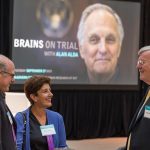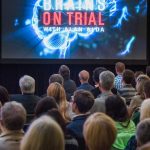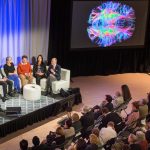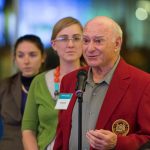Editas Medicine, a transformative genome editing company, today announced it has secured a $43 million Series A financing led by Flagship Ventures, Polaris Partners and Third Rock Ventures with participation from Partners Innovation Fund. Following an explosion of high profile publications on CRISPR/Cas9 and TALENs, genome editing has emerged as one of the most exciting new areas of scientific research. These recent advances have made it possible to modify, in a targeted way, almost any gene in the human body with the ability to directly turn on, turn off or edit disease-causing genes. Editas’ mission is to translate its genome editing technology into a novel class of human therapeutics that enable precise and corrective molecular modification to treat the underlying cause of a broad range of diseases at the genetic level.
“Editas is exclusively positioned to leverage the very latest in genome editing to develop life-changing medicines for patients,” said Kevin Bitterman, Ph.D., interim president, Editas Medicine and principal, Polaris Partners. “Our suite of foundational intellectual property, combined with the proprietary know-how of our founding team and our financial resources, will enable us to rapidly translate these groundbreaking discoveries into important medicines.”
Leading Foundational Science & Team
The company’s five founders have published much of the foundational work that has elevated genome editing technology to a level where it can now be optimized and developed for therapeutic use. Feng Zhang, Ph.D., core member of the Broad Institute, Investigator at the McGovern Institute for Brain Research and joint assistant professor in the Departments of Brain and Cognitive Sciences and Biological Engineering at Massachusetts Institute of Technology; George Church, Ph.D., founding core faculty member at the Wyss Institute for Biologically Inspired Engineering at Harvard University and Robert Winthrop professor of genetics at Harvard Medical School; and Jennifer Doudna, Ph.D., Howard Hughes Medical Institute investigator and professor of biochemistry, biophysics and structural biology at the University of California, Berkeley, are eminent academic leaders who described and invented key elements of the CRISPR/Cas technology. Keith Joung, M.D., Ph.D., associate chief of pathology for research and associate pathologist at Massachusetts General Hospital and associate professor of pathology at Harvard Medical School, is a pioneer in the development and translation of genome editing technologies. David Liu, Ph.D., Howard Hughes Medical Institute investigator and professor of chemistry and chemical biology at Harvard University, is a renowned protein evolution and engineering biologist.
The company has generated substantial patent filings and has access to intellectual property covering foundational genome editing technologies, as well as essential advancements and enablements that will uniquely allow the company to translate early findings into viable human therapeutic products.
Dr. Zhang commented, “Advances in genome editing have opened the door for an entirely new and promising approach to treating disease by correcting causative errors directly in a patient’s genome. Editas is optimizing and refining existing genome editing technology to create a versatile platform for the development of potential human therapeutics.”
Genome Editing
CRISPR (clustered, regularly interspaced short palindromic repeats)/Cas9 (CRISPR-associated protein 9) and TALENs (transcription activator-like effector nucleases) comprise novel gene editing methods that overcome the challenges associated with previous technologies. Early published research on CRISPR/Cas9, coupled with a growing body of work on TALENs, suggests the potential to pursue therapeutic indications that have previously been intractable to traditional gene therapy, gene knock-down or other genome modification techniques. The CRISPR/Cas9 system, the most recent and exciting approach to emerge, acts by a mechanism in which the Cas9 protein binds to specific RNA molecules. The RNA molecules then guide the Cas9 complex to the exact location in the genome that requires repair. CRISPR/Cas9 uniquely enables highly efficient knock-out, knock-down or selective editing of defective genes in the context of their natural promoters, unlocking the ability to treat the root cause of a broad range of diseases.
“Editas is poised to bring genome editing to fruition as a new therapeutic modality, essentially debugging errors in the human software that cause disease,” said Alexis Borisy, director, Editas Medicine and partner, Third Rock Ventures. “Our CRISPR/Cas9 technology is favorably differentiated due to its ability to pursue almost the entire genome, allowing broad therapeutic application and the targeting of defective genes in a highly specific, selective and efficient manner.”
Management and Board
In collaboration with its founders, Editas has assembled a leadership team and board of directors comprised of experienced investors and industry veterans with proven track records for building exceptional life sciences companies. In addition to Dr. Bitterman, the Editas leadership team includes Alexandra Glucksmann, Ph.D., interim chief operating officer and former founding employee and SVP of research and development at Cerulean Pharma; and Lou Tartaglia, Ph.D., interim chief scientific officer and partner, Third Rock Ventures.
The board of directors is composed of leaders from the Editas syndicate including Mr. Borisy; Douglas Cole, M.D., general partner, Flagship Ventures; and Terry McGuire, co-founder and general partner, Polaris Partners.
“The gene editing approaches on which Editas is based represent some of the most exciting and promising scientific breakthroughs in recent years, making it possible, for the first time, to correct the genomic defects responsible for a broad range of diseases,” said Dr. Cole. “The Editas syndicate has come together as a collaborative team dedicated to supporting and advancing the company’s revolutionary approach to improve patients’ lives. Our funds’ collective strength provides Editas the resources to translate this groundbreaking work into important therapeutics.”
About Flagship Ventures
Realizing entrepreneurial innovation is the mission of Flagship Ventures. The firm operates through two synergistic units: VentureLabs™ which invents and launches transformative companies, and Venture Capital, which finances and develops innovative, early-stage companies. Founded in 2000, and based in Cambridge, Massachusetts, Flagship Ventures manages over $900 million in capital. The Flagship team is active in three principal business sectors: therapeutics, health technologies and sustainability/clean technology. For more information, please visit www.flagshipventures.com.
About Polaris Partners
Founded in 1996, Polaris Partners has more than $3.5 billion in capital under management which we invest into a diverse portfolio of technology and healthcare companies throughout their lifecycles. From the earliest startup phases through the growth equity stages, Polaris Partners takes minority and majority positions alongside outstanding management teams to help grow industry leading companies like Ascend, Avila, Ironwood, Receptos, LogMeIn and Akamai. With offices in Boston, San Francisco and Dublin, Polaris partners with an unparalleled network of repeat CEOs, entrepreneurs, top scientists and emerging innovators who are positioned to make a significant impact in their fields and vastly improve the way in which we all live and work. The result: Hundreds of growing companies, thousands of jobs generated, and billions of dollars of value created. For more information, visit: www.polarispartners.com.
About Third Rock Ventures
Third Rock Ventures is a leading healthcare venture firm focused on investing and launching companies that make a difference in people’s lives. The Third Rock team has a unique vision for ideating and building transformative healthcare companies. Working closely with our strategic partners and entrepreneurs, Third Rock has an extensive track record for managing the value creation path to deliver exceptional performance. For more information, please visit the firm’s website at www.thirdrockventures.com.
About Partners Innovation Fund
The Partners Innovation Fund is the strategic venture fund for Partners HealthCare, founded by the Massachusetts General Hospital and Brigham and Women’s Hospital. The mission of the fund is to provide the necessary support to commercialize innovations in medical informatics, diagnostics, drugs and devices that emerge from the Partners HealthCare investigator community.





























































